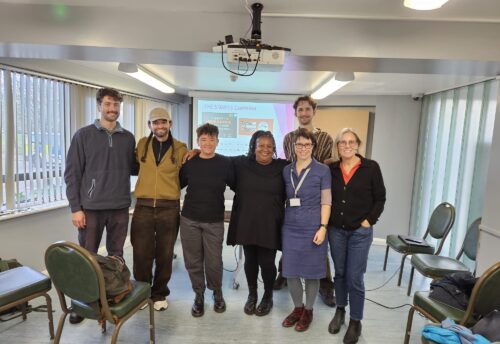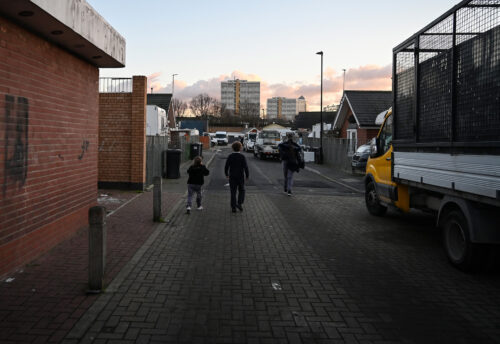To mark Gypsy, Roma and Traveller history month this June, LGT has put together an exhibition on the life and struggles of Gypsies and Travellers in London over the last 100 years. The exhibition will be shown at the Hackney More in Common Festival on 17th June.
The exhibition follows the story of families settling in London in the late 19th and early 20th century. It shows caravans gatherings at traditional stopping places such as Folly Lane in Waltham Forest and Bonny Downs in East Ham.
Gypsies and Travellers moved around London, working as seasonal labourers and in traditional trades like chair canning, basket weaving, tin smithing and pot mending. In summer they went hop picking in South London and Kent. As all-year round work became increasingly available, families started to settle more permanently. The availability of education and healthcare services was another incentive for families to settle.
As London expanded, many traditional stopping places were replaced by housing estates and motorways – and the issue of sites became more and more important.
In the 1960s community campaigners and organisations started to campaign for Traveller council sites, where families and communities could preserve their way of living. The caravan represents the freedom to roam and allows extended families to live close together in a communal manner – two key elements of the Gypsy and Traveller identity.
In the 70s and 80s Gypsies and Travellers settled all around London. But not all boroughs provided sites, and those that did provided the minimum. This led to illegal sites, evictions and overcrowding.
In 1994 the Criminal Justice and Public Order Act removed the duty to provide sites and gave police and local authorities greater powers to evict Gypsies and Travellers.
An official report, published in 2008 for the use of the Mayor of London, said that 800 new pitches (family units) were needed for Gypsies and Travellers in London. Until now only 10 have been allocated.
While the struggle for sites and recognition of the Gypsy and Traveller culture continues to this day, communities are also living rich and fulfilled lives in the diverse and inclusive boroughs of London like Hackney – where, as history has moved on, the signs in pubs saying “No Gypsies/ No Travellers” have disappeared.
At the Hackney More in Common Festival we will also be hosting a discussion “In Conversation with London’s Gypsies and Travellers”, talking about life in Hackney today, and about the resilience, joys and challenges of the community.
The exhibition is open from 11.30-17.00 and the discussion starts at 12:30 on Saturday, 17th June 2017 at the Hackney More in Common Festival.


